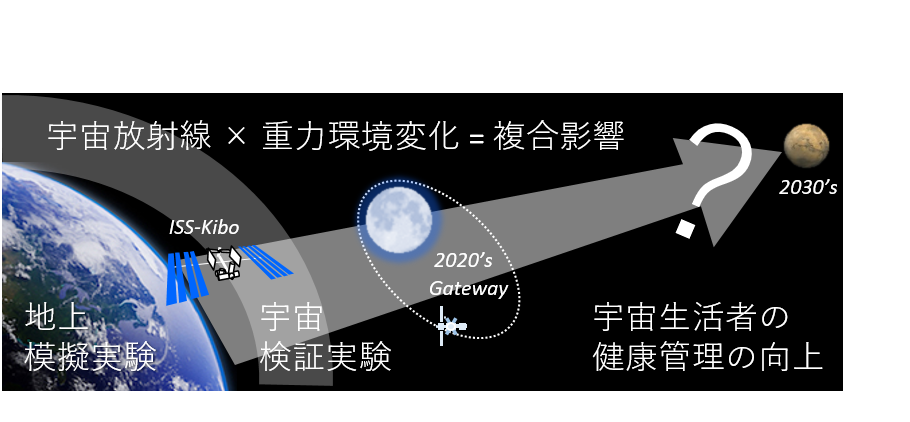国際宇宙ステーション「きぼう」利用宇宙実験とその先へ
群馬大学重粒子線医学研究センター
教授
髙橋 昭久

再び月へ、火星へ、その先へと有人宇宙探査が計画されています。深宇宙は、突然の太陽からの宇宙放射線や超新星爆発による壁をも突き抜ける重粒子線が降り注ぐ過酷な環境です。また、宇宙は地上と異なる重力環境 (宇宙空間は無重力、月は1/6、火星は3/8の低重力)です。そこで、宇宙生活者の健康管理の向上のため、この複合影響について、世界唯一の宇宙環境模擬装置で地上模擬実験に取組み、国際宇宙ステーション日本実験棟「きぼう」のみならず、その先の月周回有人拠点ゲートウェイを利用した宇宙検証実験の準備をすすめています。
?
Space experiments using the International Space Station “Kibo“, and beyond…
Akihisa Takahashi
Professor, Gunma University Heavy Ion Medical Center

Deep space human exploration has become more realistic, plans of returning to the Moon, travel to Mars, and beyond. Deep space travelers will be constantly exposed to solar particles and galactic cosmic rays including high-energy heavy-ion without protection. In addition, human body is affected by microgravity in outer space, and partial gravity (1/6 and 3/8) in near-Earth objects (Moon and Mars). Therefore, it’s necessary to research the combined effects in order to improve the health care in space. We developed the unique simulators of the space environments, and are doing the ground-based simulated experiments. Now, we prepare the space experiments using the International Space Station “Kibo“, and the future Gateway Moon-orbiting space station.


